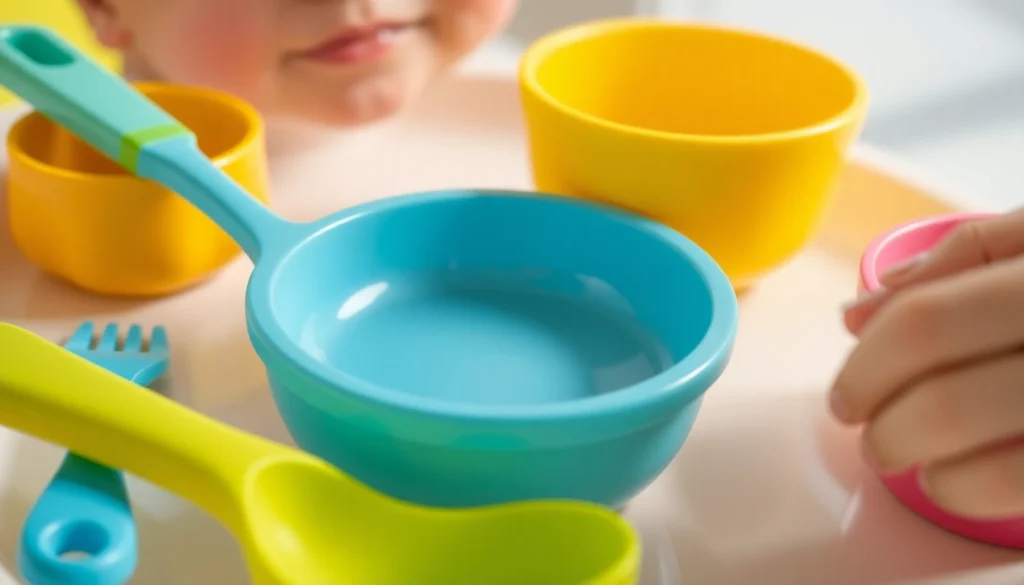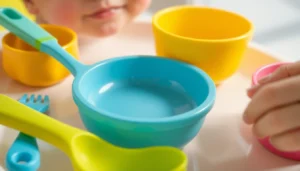Essential Baby Feeding Set for Weaning: Safely Transition Your Little One

Understanding the Baby Feeding Set for Weaning
Introducing solid foods to a little one marks a significant milestone in their development, known as weaning. Central to this transition is the use of a Baby feeding set for weaning. These sets are thoughtfully designed to facilitate a smooth, safe, and enjoyable eating experience for both parents and infants. They are more than just utensils; they are tools that promote independence, motor skills, and healthy eating habits from an early age.
What exactly makes up a quality baby feeding set? It typically includes a combination of utensils (spoons, forks), plates, bowls, and accessories such as bibs and reins, crafted with infants’ safety and developmental needs in mind. Choosing the right set ensures that feeding time is a positive experience that supports growth and learning.
Key Features of a Quality Baby Feeding Set
Safety and Certification
High-quality baby feeding sets are made from 100% food-grade materials, primarily silicone and BPA-free plastics. Certifications like LFGB or FDA compliance confirm that the products meet strict safety standards, free from harmful chemicals like BPA, phthalates, or lead. This assurance is critical since young children often put utensils in their mouths, and ingestion of toxic substances must be avoided at all costs.
Design and Functionality
Functions such as suction cups or non-slip bases help stabilize plates and bowls, preventing spills and making self-feeding easier for your child. Ergonomic handles designed for small hands foster independence, while sectioned plates aid in offering a varied diet, encouraging the exploration of different flavors and textures. Easy-to-clean surfaces are also vital, allowing hassle-free maintenance to ensure hygiene and longevity of the set.
Choosing the Right Baby Feeding Set for Weaning
Age-Appropriate Designs for Different Development Stages
Baby feeding sets evolve with your child’s growth. For newborns or early weaning phases, sets with soft, ergonomic spoons and bowls with suction bases are ideal. As the baby develops fine motor skills, introducing utensils with handles that are easier to grasp facilitates independence. For older toddlers, more sophisticated sets with multiple compartments encourage self-serving and exploration.
Durability and Safety of Silicone Utensils
Silicone is the preferred material for baby utensils due to its flexibility, heat resistance, and durability. Quality silicone utensils resist cracking, staining, and warping, ensuring long-term usability. Additionally, they are non-slip and soft to prevent injury. When selecting silicone products, verify that they are free from fillers and additives that could be hazardous to infants.
Balancing Style and Functionality
While safety and functionality are paramount, aesthetics also matter. Vibrant colors and playful designs can stimulate a child’s interest in mealtime. Many brands offer trendy, sleek, and colorful sets that appeal to modern parents without compromising safety. A well-designed feeding set not only encourages your child to eat independently but also becomes a cherished part of your daily routine.
Step-by-Step Tips for Introducing the Baby Feeding Set
Making Weaning Smooth and Stress-Free
Start by familiarizing your infant with the new utensils and dishes using positive reinforcement. Introduce each item gradually, demonstrating their use during mealtime. Incorporate them into daily routines, such as offering a colorful, silicone bowl or plate at each meal. Experiment with different textures and flavors to keep meals engaging.
Engaging Your Baby During Feeding Time
Engagement is key to successful weaning. Use bright, attractive utensils and speak gently about each step. Make mealtime a playful interaction—encourage your baby to grasp utensils, mimic actions, and explore different consistencies. Creating a relaxed, cheerful environment helps establish a positive association with food and self-feeding.
Creating a Routine with the Baby Feeding Set
Consistency fosters confidence. Establish a predictable schedule—set regular times for breakfast, lunch, and dinner. Use the same utensils and dishes to create familiarity. As your baby becomes accustomed to their feeding set, they’ll develop self-feeding habits, helping to build their independence and fine motor skills.
Maximizing Benefits and Maintenance
Cleaning and Caring for Silicone Baby Utensils
Proper maintenance prolongs the life of your baby’s feeding set. Most silicone utensils are dishwasher safe; otherwise, wash them with warm, mild soap and water. Avoid abrasive sponges that could scratch surfaces. Periodically check for wear or damage, replacing items that may no longer be safe. Keeping utensils clean inhibits bacterial growth and ensures safe consumption.
Monitoring Your Baby’s Progress
Observe how your child interacts with the feeding set—are they able to grasp utensils? Do they show interest, or is there resistance? Monitoring these behaviors helps you adjust the choice of utensils and food textures accordingly. As your child develops, introduce utensils with different sizes or materials to match their growing skills.
Adjusting as Your Child Grows
Feeding tools should evolve with your child’s developmental stages. Transition from soft, suction-cup bowls to more advanced utensils with handles. Incorporate dividers or snack cups to accommodate varied diets and preferences. Regularly reassess your child’s needs and select appropriate tools to foster ongoing independence and confidence at mealtime.
Real-Life Success Stories and Product Recommendations
Parents’ Experiences with Baby Feeding Sets
Many parents report that high-quality silicone feeding sets significantly ease the weaning process by reducing mess and encouraging self-feeding. For example, Maria, a mother of two, shares how switching to a silicone plate with a suction base drastically improved her child’s eating independence and minimized spills. These real-world experiences highlight the importance of choosing the right tools to promote positive mealtime routines.
Top Brands and Models for Quality and Safety
Leading brands such as Bebeboom offer thoughtfully designed baby feeding sets featuring silicone utensils, sectioned plates, and bowls with suction bases. These products emphasize safety, durability, and vibrant aesthetics. When choosing a product, prioritize certifications and user reviews to ensure you’re investing in reliable, safe options that support your child’s developmental milestones.
How to Spot Counterfeit or Low-Quality Products
Counterfeit items may appear similar but often lack certification, are made from inferior materials, or feature designs that do not meet safety standards. Always purchase from reputable sellers or official brand stores. Check for proper certifications, labels, and detailed product descriptions. Avoid ultra-cheap options that seem too good to be true, as these pose safety risks and won’t stand the test of time.




